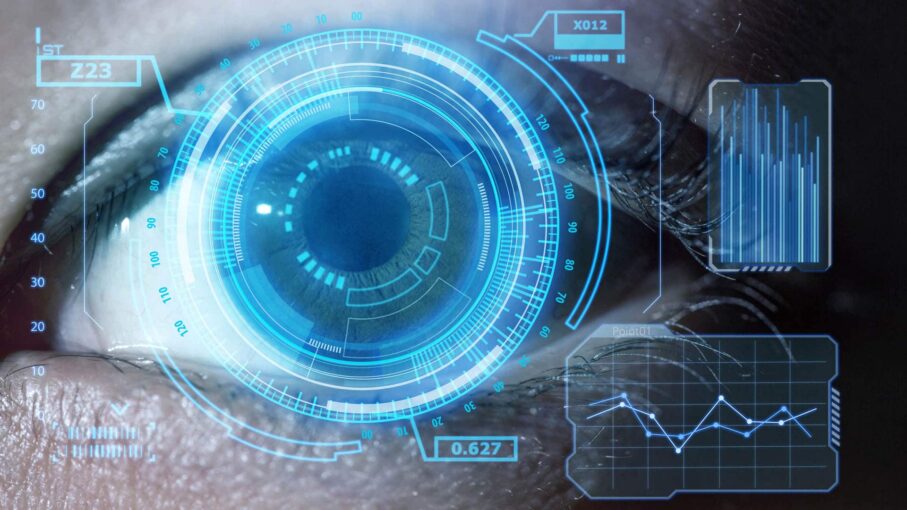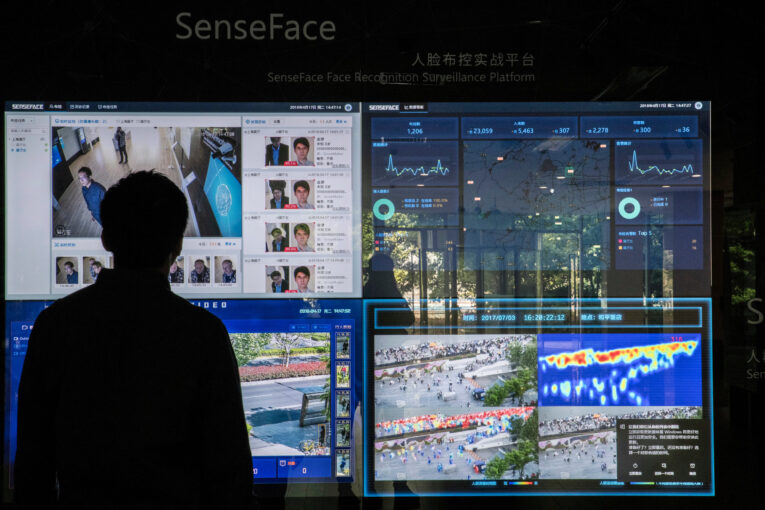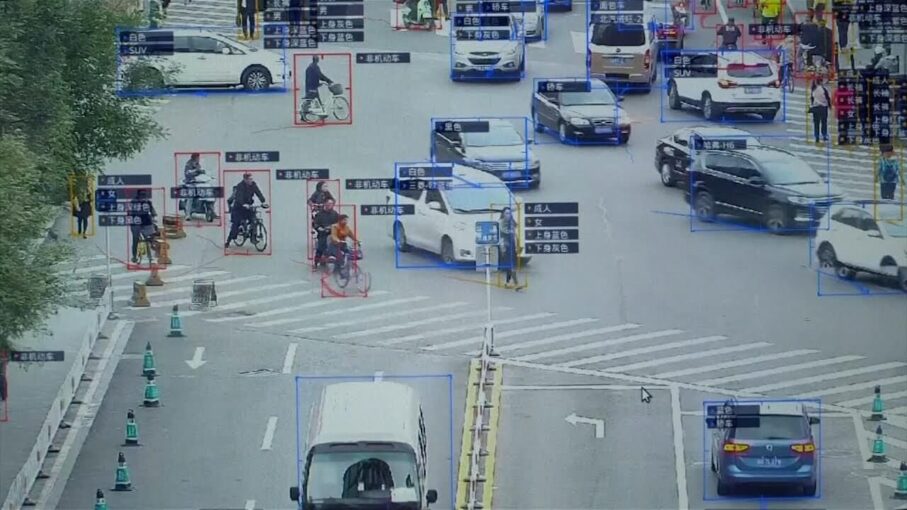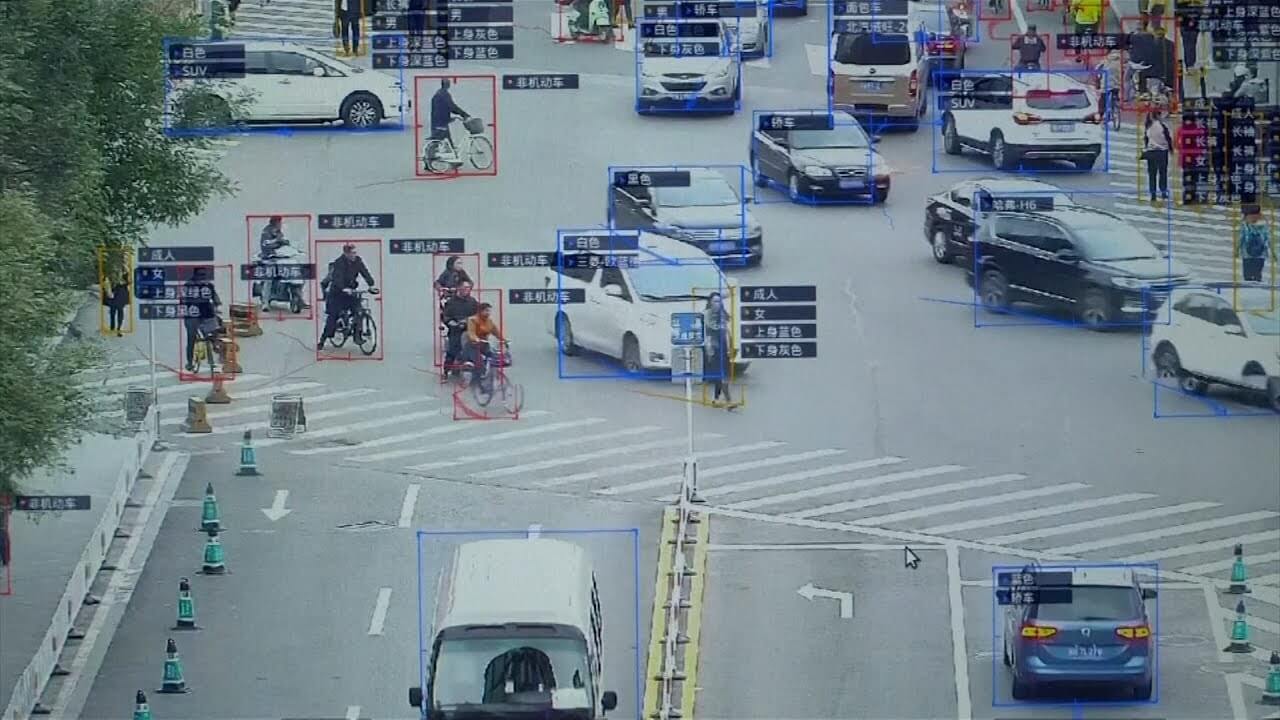My greatest entertainment while growing up was watching Baretta and Columbo on a black and white TV towards the end of 1970s. These shows were the starting point of the career I chose for myself because after watching them I was sure of what I wanted to be when I grew up. One day I was going to become a homicide detective who unraveled the mysteries behind murders and brought killers to justice. And that’s what happened… After graduating from the Police Academy in 1987, I started working at the Istanbul Homicide Bureau as a detective. My dreams had come true but there were some things that just felt off. There were not any mystical murders similar to the ones I had watched on TV, the murders that did happen were solved through basic investigation and through manual labour. Later on, I would call this approach “manual policing (old-school policing)”.
At the time, technology was very limited, therefore experience and mastership were very crucial. However, being unable to use technology and science was causing us to miss a lot of details about the cases. It was unacceptable for detectives not to be able to adapt to new methods especially when crime and criminals were constantly evolving. I started my evolution by using the available technologies of the time in my investigations. I was taking photographs of crime scenes with a small camera I had bought from the Russian Bazaar in Eminönü. I would have these photographs developed at a photographer’s shop so that I could use them for understanding the crime scene. Back in the day, there was not a crime scene investigation unit as we have it today, and the only photos of the crime scenes would be taken by a photographer sent from the fingerprint department to collect shots for their own records. During my 9 years of service as a homicide detective, we tried our best to improve our use of technology and we realized that it was just as influential as our experience in manual policing.
DNA matching technology was first used in 1987 for solving two murders that happened in Leicestershire, England and it was accepted as evidence by the court. Lynda and Dawn, both 15 years old, were living in the same area and had been raped and murdered 3 years apart from each other, Lynda in 1983 and Dawn in 1986. Both cases could not be solved. In 1987 DNA matching was able to identify and convict Colin Pitchfork as the culprit of both crimes. 8 years after this incident, we were able to identify Tahsin Kaba as the murder suspect of two young sisters who had been raped and murdered in their home in Istanbul Fatih Şehremini neighborhood by using DNA matching for the first time. This was a major breakthrough in Turkey for homicide investigation and detectives were able to see how technology and science could be of use in their search for justice. Correspondingly, the profile of the detectives in the Homicide Bureau was also changing. Before then, detectives used to investigate the bodies of the victims with their bare hands, throw their cigarette butts on the ground of the crime scene, basically they would not care about the contamination of evidence from the scene. Their idea of interrogation consisted of asking the suspects only if they had committed the crime. This out-dated approach was giving way to detectives who adapted and valued new technological advancements and judicial changes.

On the other hand; many elements such as methods of committing murder, culprits and locations were also changing. One thing, however, never changed; people’s motivation behind murders. Since the time of Cain and Abel, people have been killing each other with similar motivations.
However, rapid advancements in science, technology, economy and social life in the past 30 years have radically altered the nature of crime as well as the way it is committed. 30 years ago, armed bank robberies were in our agenda, today criminals known as “hackers” are using the internet to rob those banks. Criminals who used to kidnap children and ask for ransom have now become “ransomer hackers” who hack into the online systems of companies and individuals and demand bitcoin as ransom.
Countries have started to build cyber armies along with conventional armies. Cyber wars are happening 24/7 around the globe. Countries are not after only physical lands, but they are after the cyber soils now. It is even possible to watch these cyber battles online in real-time. Instead of James Bond-like spies, we now have hacker-spies who can seize top secret government files from the comfort of their own seats. They don’t even have to be behind their computers anymore. The spy software and robots they create are constantly working on the background without getting tired.
We see a new form of fraud surfacing every day. For last year alone, over 1 trillion U.S. dollars worth of fraud has been reported all around the world. Vicious attacks to certain brands through social media force these brands to end their commercial presence. Businesses and institutions cannot fight back against new forms of in-house frauds in an effective way; thus, they bleed out. Current systems are able to mostly fight conventional crimes that are dominantly physical, whereas these systems fail in being sufficient to fight back against cyber-attacks and new forms of crimes. In the conventional world it is commonly said that criminals are often one step ahead. With new forms of crime, these criminals will start ten steps ahead.
Physical crimes against humans such as assault and murder remain pretty much the same. Murder cases fluctuate depending on the social, economic and political standards of countries. The most dramatic change in homicide is the increase in female victims. 30 years ago, the global rate for murders with female victims was less than 15% whereas today this rate has gone up to 20%. This increase applies to Turkey as well; in 1995 female victims made up 15% of homicides in Turkey and nowadays this rate is at 21%.
So, what will be the next step? Will crime continue the same way? How will police forces be able to prevent crime, identify criminals and convict them? It is impossible to give accurate answers to all of these questions in today’s standards. This is because we are changing from “the age of the internet” to “the age of data”, which will bring so many changes with it. Data collected from the last 20 years, is so much more than the data collected since human existence. Everything is increasing exponentially not just linearly. Humans have moved past the limits of their own intelligence and dreams. However, it is possible to make predictions based on the intermediate stations of these improvements and changes. I believe that the first intermediate station will happen between the years 2030 and 2040. During this time period, we will see many changes which are not applicable today; in forms of crime, judicial arrangements and fight against crime. I am not making the predictions that I will mention below with a psychic approach. These predictions, which were made through collating extensive research from various resources and merging futuristic technologies, are only some of my thesis.
Predictions on Crimes Concerning Health:
Similar to cloning animals; biological cloning technologies will enable humans and human organs to be cloned. These cloning procedures will only be done in legally permitted scenarios. However, illegal pirate-cloning-mobs will clone organs, even humans based on customer demand.
Criminals will be able to clone human DNA and stem cells which will enable them to also clone fake blood, skin, sperm, hair samples and different body parts that can be used to manipulate evidence in crime scenes. When this method becomes more widespread, DNA samples collected from crime scenes will lose its credibility.


Biological weapons which can be used to target specific individuals or races will be created through genetic engineering from human DNA samples. Genetic engineer hit-men will create specialized viruses to target their victims based on the demands of their clients.
There can be illegal alterations and manipulations done to your children’s DNA without your consent, enabling the creation of “super humans”.
Cyber hackers could hack into people’s wearable technology devices which will commonly be used to track health performance in the future (Over 50 trillion active sensors are estimated to exist in these devices during that time period). These hackers could make people “feel” as if they are sick. Even if the person’s actually healthy, they will be manipulated into purchasing certain medicines and cures.
After 5G technology, remote control surgical procedures will become widespread by doctors and hackers will be able to sabotage these procedures, even possibly kill the patient through hacking into the communication system.
Hackers could infiltrate into digital operation centers of hospitals to manipulate the medicinal needs and cures of patients which could cause them to die. (A similar incident happened in the U.S.A., the crime was solved through the cyber killer’s own confession, otherwise it would have been impossible to solve.)
Instead of collecting people’s credit card information, hackers will focus on seizing their biological and biometric data which they could later sell to pharmaceutical organizations in the black market.
Predictions on Crimes Concerning Computer Sciences and the Internet
Human brain and consciousness will be backed up digitally. We will create “digital twins” of people. Criminals, who hack into these digital twins, will be able to steal or wipe out people’s digital brain and consciousness. This will be considered as severe a crime as physically murdering a person.
Countries will give citizenship to certain robots and artificial intelligences therefore crimes against these entities will begin to show itself in judicial systems. I am certain that people who commit physical and digital abuse against robots and artificial intelligence will predominantly consist of men, similar to those who commit crimes against women.
After the emergence of quantum computers (which is estimated to happen after 2030s), all password ciphering systems that are used (defense, government, finance, health, etc.) will lose their validity. Today’s computers can decipher certain passwords in 100 years whereas with quantum computers this time can go down to only 100 seconds. The Bitcoin world, which is created as a BlockChain, will definitely be affected by this.
Everything that you can add the word “smart” to , such as smart cities, houses, cars, etc., could be used to monitor and possibly harm you through the use of the Internet of Things (IoT) in your home, workplace and vehicles. Hackers could start a fire at your home or workplace by accessing the oven or gas system. They could cause you to have an accident while driving by making you hit the brakes or making you drive faster.
Your personal or commercial use of artificial intelligence will be manipulated to make wrong decisions, run wrong processes or completely be eliminated by third parties with bad intentions.
Augmented and virtual reality devices will be used for daily activities and they could be used to manipulate what people hear and perceive by hackers.
Marriage between humans and artificial intelligence will create a lot of controversy on future civil rights issues.
Racism will evolve from being based on race to being based on genetic qualities of people.
Energy systems of countries could be deactivated through cyber-attacks. Mass murders can result from deactivating energy systems of patients who depend on machines to survive.
Through biometric facial recognition systems, drones will be able to target and assassinate specific individuals.
Digital twins of Airplanes, ships, automobiles and certain machinery used in industries could be deactivated through cyber-attacks.
Artificial intelligences that can create other artificial intelligences will become widespread and they will be used to provide new A.I. algorithms to aid individuals or institutions. This will result in a new understanding of crime: Crime committed by machines against machines or people.
Predictions on Crimes Concerning Organized Crime;
Organized crime rings of today will transition from conventional methods to new areas. Black web in the cyber world will become their playground. They will operate in areas they are connected to via their networks, not just their countries.
They will try to dominate the black market for genetic engineering. They will create a black market for sex and drugs through AR and VR technologies.
Instead of using conventional weapons, they will use cyber-attack methods.
Apart from a few global organized crime rings, most criminal groups will operate on local networks.
All these predictions from various areas of crime paint a very dim picture of the future for us today. Of course, systems to fight and defend against these new forms of crime will also evolve. What will we see in policing systems? What will future detectives do, will detective robosts (A.I) be employed? We can ask so many questions like this. Let’s look at some of our predictions on this matter:
Future of Policing:
“Predictive crime analysis systems” which have recently started to be used, will become the most important weapon for the police. The police will actively use the big data and artificial intelligence that criminals use. They will be able to predict and prevent crimes at a very successful rate.
Advanced CCTV monitoring systems that can analyze people and objects in real-time will become very popular around the world. These systems will have simultaneous analysis qualities which will be used to detect suspicious human and robot behavior. Countries such as China, the U.K., India and the U.S.A. have already started working on this project. Currently the biggest system is China’s SKYNET. This system has the ability to collect and analyze data from over 150 million cameras in real-time. SKYNET can locate a lost child or adult in less than 15 minutes in a city of 20 million people. It is estimated that the number of cameras in this country will reach 1 billion in 2030.
The police will focus their resources on predetermined areas that have the most potential for crime. In order to do this, they will use crime mapping, link analysis methods, data science, machine learning algorithms and real-time analysis tools.
Police capability and opportunities in developed countries will play a major role in battling crimes of violence. However, crimes of violence will continue at similar rates in undeveloped or developing countries.
Police will be more successful in fighting against property crimes such as robberies, theft and fraud.
Crime scene investigation drones that are programmed with A.I. and machine learning technology will be used in homicide investigations and they will be able to navigate on land and water as well as air. These drones will use high resolution cameras to detect the smallest details in crime scenes by using different wave lights. Fingerprints, DNA and other things that can be used as evidence will be collected by the help of these drones.
Heat identities of suspects will be collected in crime scenes and we will be able to identify culprits based on the body heat of people. Similar to DNA banks, in time, heat identification banks will be established.
Homicide detectives will be able to access all data from the crime scene through AR / VR goggles. With this technology, they will investigate the crime scenes as if they were actually in it.
Data collected from the crime scene and other sources will enable A.I. to create simulations of potential crime scenarios for homicide detectives.
During interrogation, detectives will be able to analyze micro expressions and body language of suspects through apps and cameras. With this technology, they will understand whether the suspects are lying or not.
Detectives will be able to create investigations to analyze a murder before it happens and thus be able to prevent it. The events that happen in the 2002 film Minority Report can be considered as a precursor to this.
Homicide detectives will not be able to solve cases through only personal abilities. They will work as a team. This team will consist of crime analysis experts, cybercrime experts, data scientists and artificial intelligence engineers.
The concept of conventional currency will nearly be obsolete, therefore traditional banks and bank robberies will become obsolete as well. Instead, the police force will improve their capabilities in crimes against digital robberies.
Along with conventional police vehicle patrols, police drone patrols will become widespread on streets. Robot traffic policemen and drones will monitor land and air traffic.
The change in forms of crime and prevention will ultimately affect the nature of detective literature and films.
Predictions on Future Detective Literature and Films:
Interest in detective stories and films will continue as it is.
DNA and body biometrics: facial recognition, fingerprints, palm prints, footprints, ear prints, core prints, retina prints, heat prints, scent prints, sound prints, etc., will continue to be used in detective literature.
Cybercrime forms, cyber terrorism, cyber organized crime rings, cyber homicide, cyber killers, cyber spies, cyber fraud, etc., will be dealt with more in future detective stories.
Cyber wars between countries and networks will be depicted in stories and documentaries, similar to World War II documentaries.
The profile of the detectives in future detective literature will also change. We will see more fictional detectives like Sherlock Holmes and Dr. Watson in the shape of artificial intelligence algorithms. Their support team will consist of various experts that can analyze both human and robot behaviors; cybercrime experts that can analyze cyber scenes and applications, data scientists who know at least three programming languages along with A.I. engineers. Ahmet Ümit`s “Chief Inspector Nevzat” and his team will solve much more complicated crimes in the future. The famous “Riza Baba” and his team in the Turkish TV series Arka Sokaklar will have to adapt to this future policing if the show continues to air in 2030s as it has for the past 14 years.
Writers will become technology-dependent in order to attract the attention of the readers of today and tomorrow. Otherwise, it will not be possible for them to keep up with the ridiculous speed of technological advancements.
In conclusion, no matter how much technology changes and new forms of crime arise; the basic instincts that create the crime, the personality disorders and opportunities will remain the same in the future. As long as greed, taking advantage, grudge, hatred, jealousy, laziness, narcism, sociopathy, psychopathy and lust continue to exist, so will crime for humans and machines. These will continue to be the basic motivations and topics of mysteries and thriller stories.
Written by Mesut Demirbilek, this article titled Future Forms of Crime & Policing, And Their Place in Mysteries… was featured in 221B’s December 2021 issue.






